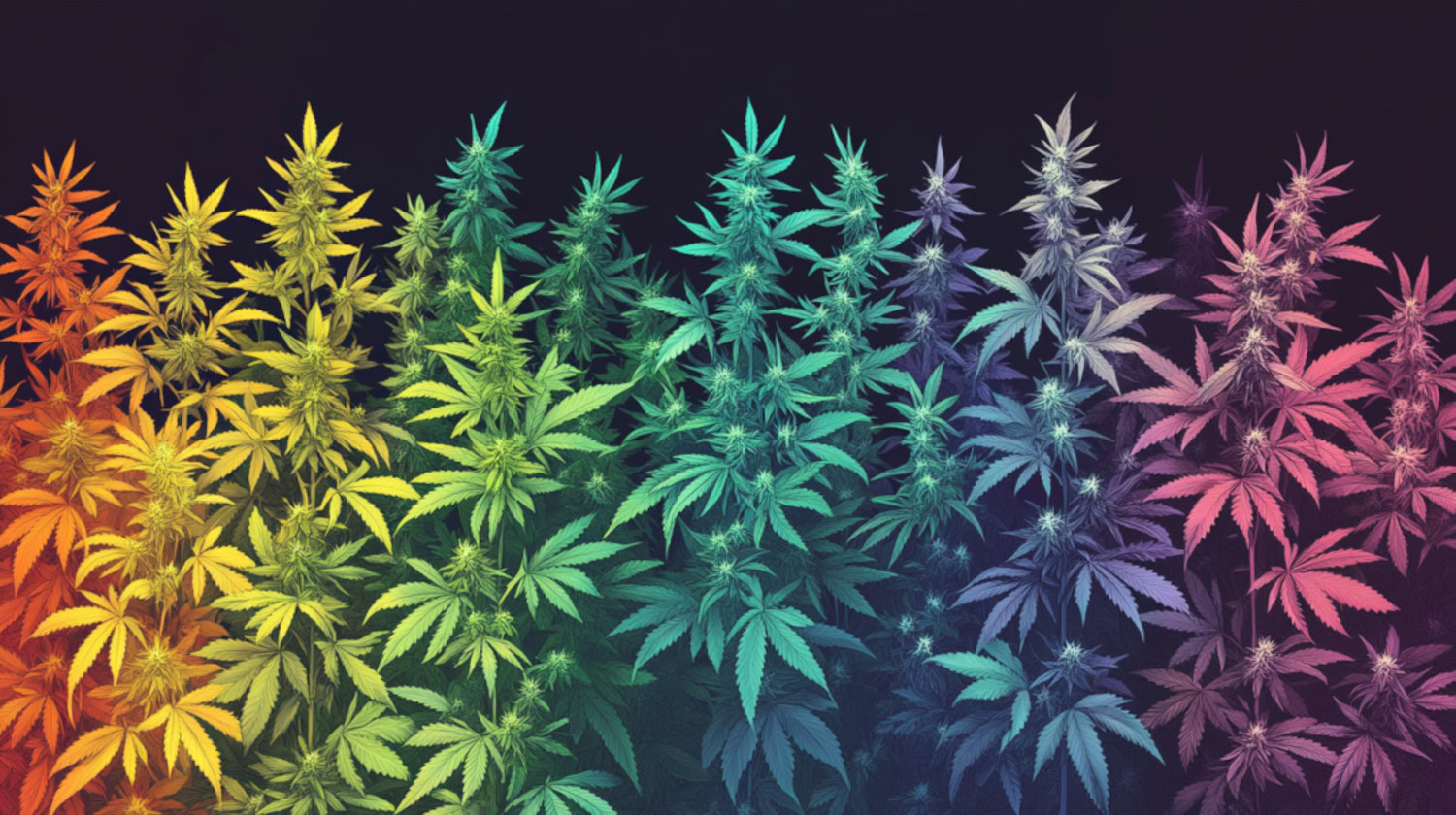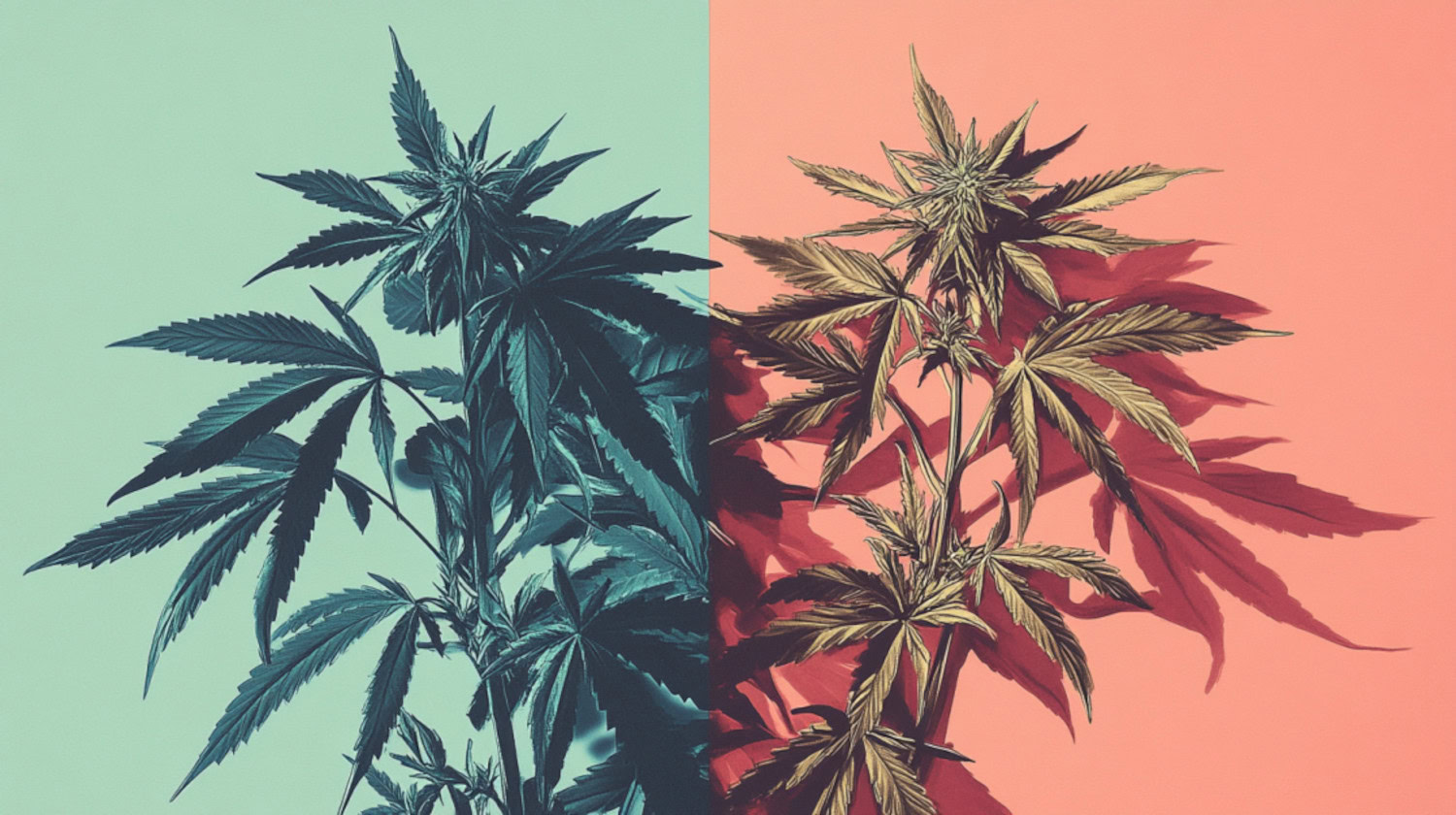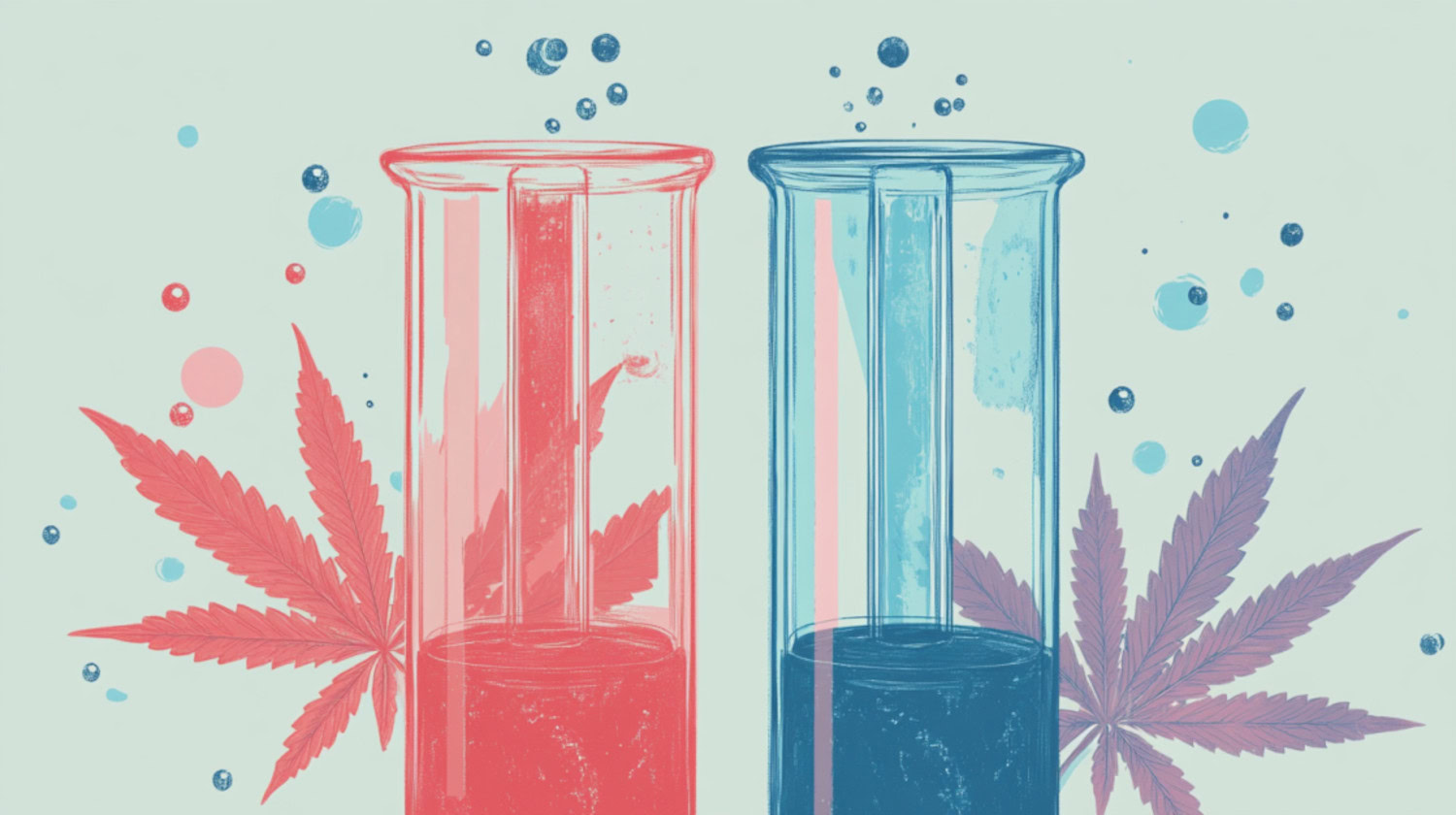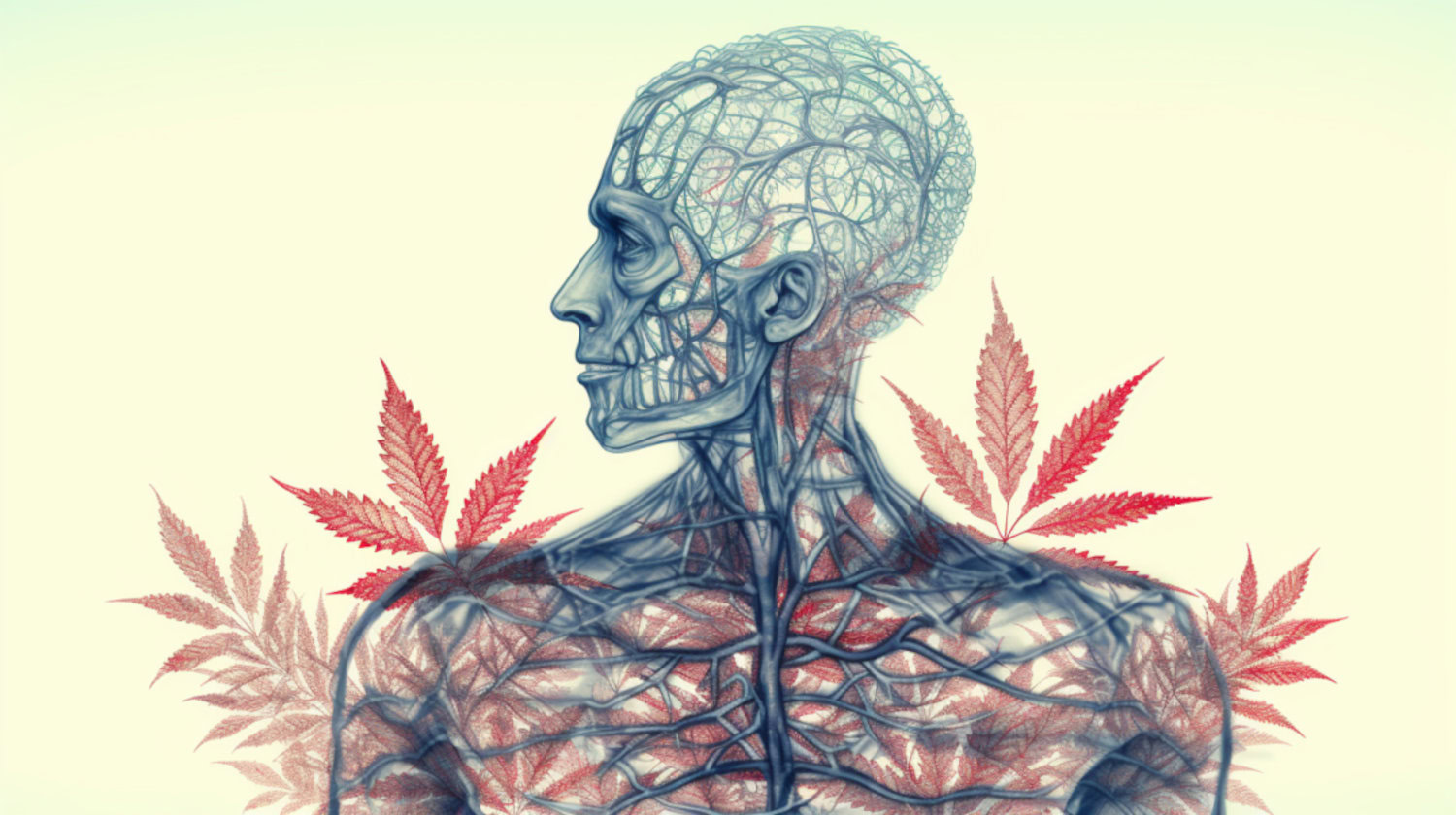In This Article
- How Do Cannabinoids Work in the Body?
- Endocannabinoids vs. Phytocannabinoids
- Major and Minor Cannabinoids
- Major Cannabinoids
- Minor Cannabinoids
- How Cannabinoids Develop: The CBGA Connection
- Delta-THC Cannabinoids and Semi-Synthetic Cannabinoids
- Are Cannabinoids Safe?
- Frequently Asked Questions (FAQ)
- What are examples of cannabinoids?
- What are the top 5 cannabinoids?
- Are cannabinoids safe to use?
- What substances contain cannabinoids?
Key Takeaways
- Cannabinoids, like THC and CBD, are natural compounds produced by the cannabis plant.
- The body has an endocannabioid system responsible for regulating many processes that the plant-based cannabinoids interact with.
- Though some research has linked natural cannabinoids with negative effects, other research has shown no such risks, and the majority of people report no serious issues with natural cannabinoids.
Whether looking for pain relief, relaxation, or just a good time, the cannabis experience all comes down to cannabinoids, the chemical compounds in cannabis that interact with your body. These tiny but powerful molecules influence everything from mood to appetite, and understanding them can help fine-tune each cannabis experience.
How Do Cannabinoids Work in the Body?
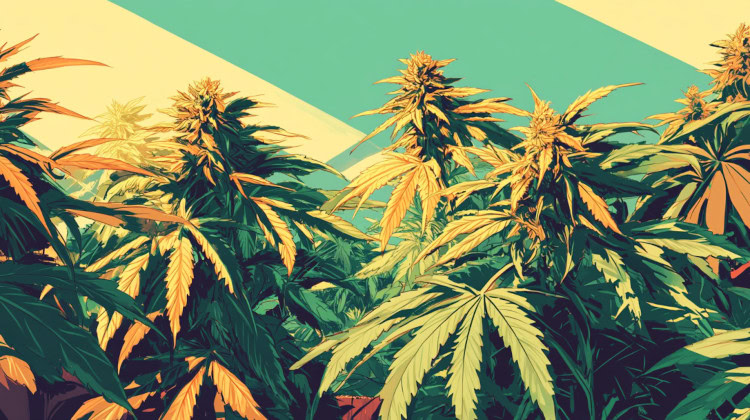
Cannabinoids are natural compounds that interact with the body's endocannabinoid system (ECS), an internal network that helps regulate mood, appetite, pain, and more. There are two main types of cannabinoids: those made by the human body, called endocannabinoids, and those found in cannabis and other plants, known as phytocannabinoids.1 With over 100 identified cannabinoids, each has its unique properties and potential effects.2
The ECS is a system of receptors, enzymes, and naturally occurring cannabinoids that help keep the body balanced. Cannabinoids bind to CB1 and CB2 receptors in the body.3
CB1 receptors are concentrated in the brain and nervous system. When tetrahydrocannabinol (THC) activates them, it produces the "high" associated with consuming cannabis. CB1 activation also influences memory, movement, mood, and pain perception.
CB2 receptors are found primarily on immune cells and peripheral tissues. Activating these receptors doesn’t cause impairment but may help reduce inflammation and pain. Cannabinoids like cannabidiol (CBD) interact with CB2 receptors, offering potential anti-inflammatory benefits.
Endocannabinoids vs. Phytocannabinoids
The body naturally produces cannabinoids called endocannabinoids, such as anandamide (AEA) and 2-arachidonoylglycerol (2-AG), which help regulate functions like mood and pain. These endocannabinoids interact with ECS receptors in an "on-demand" fashion, synthesized by the body only when needed.1
Phytocannabinoids, on the other hand, come from the cannabis plant and include well-known major compounds like THC and CBD, as well as lesser-known minor ones like cannabigerol (CBG) and cannabinol (CBN).2 These plant-derived cannabinoids can mimic or enhance the effects of the body’s endocannabinoids, a process called the entourage effect.
Major and Minor Cannabinoids
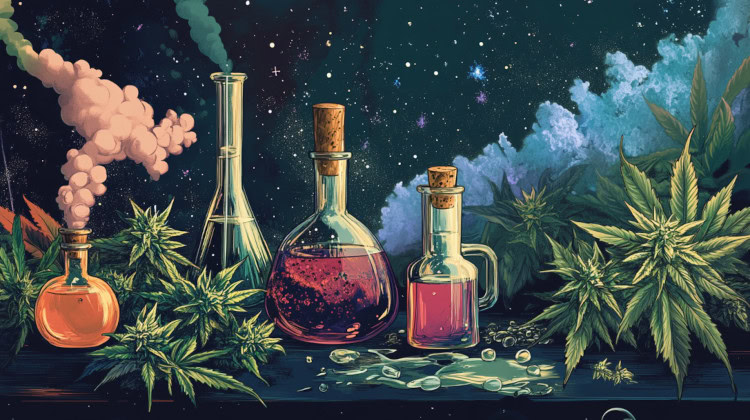
Some cannabinoids are more abundant in cannabis and highly studied, while others appear in smaller amounts but are still being studied for potential benefits.
Major Cannabinoids
The most well-known cannabinoids include:
- THC (Tetrahydrocannabinol): The main psychoactive compound in cannabis, responsible for the "high."
- CBD (Cannabidiol): A non-intoxicating compound with potential anti-inflammatory and calming effects.
- CBG (Cannabigerol): The "mother cannabinoid," as it is the precursor to many others.
- CBC (Cannabichromene): A lesser-known cannabinoid that may have antidepressant and pain-relieving effects.4
Minor Cannabinoids
Cannabis also contains smaller amounts of other cannabinoids, which researchers are still exploring. Minor cannabinoids still play a useful role in the overall effects of cannabis, and several have grown in popularity for their specific properties.
- CBN (Cannabinol): Often found in aged cannabis, its sedative properties enhance some sleep-promoting strains.4
- CBDV (Cannabidivarin): A non-intoxicating compound, under study for its potential to reduce seizures.
- CBDA (Cannabidiolic Acid): CBDA (Cannabidiolic Acid) is the raw, non-intoxicating precursor to CBD, found in hemp and cannabis. Research suggests it may have anti-inflammatory, anti-nausea, and potential neuroprotective properties, though more human studies are needed.*
- THCA (Tetrahydrocannabinolic Acid): The raw, non-intoxicating precursor to THC. THCA found in fresh cannabis plants, usually obtained by consuming the plant without heating. (Think juicing raw cannabis leaves or adding them to a salad)* THCA converts to THC when exposed to heat, so smoked cannabis won’t provide THCA.THCA may have potential anti-inflammatory, neuroprotective, and anti-nausea properties.
- THCV (Tetrahydrocannabivarin): May have appetite-suppressing effects and is being researched for metabolic disorders.
- THCP (Tetrahydrocannabiphorol): A newly discovered cannabinoid that binds to CB1 receptors up to 33 times more effectively than THC, making it significantly more potent. Early studies suggest it may have more potent effects and similar therapeutic benefits to THC.
- CBCA (Cannabichromenic Acid): A precursor to CBC with potential anti-inflammatory benefits.
- CBGA (Cannabigerolic Acid): The foundational cannabinoid from which many others, including THC and CBD, are derived.
- CBNA (Cannabinolic Acid): A precursor to CBN, which may contribute to sedative effects.
- CBGV (Cannabigerovarin): A minor cannabinoid similar to CBG, under study for therapeutic potential.
- CBCV (Cannabichromevarin): A lesser-known cannabinoid that may have similar antidepressant and pain-relieving effects to CBC.4
The classification of cannabinoids as major or minor is generally based on the amount present in a cannabis plant. Many of the minor cannabinoids have been identified but not studied. Ongoing research continues to determine their potential effects and benefits.
*Raw cannabis can expose you to harmful bacteria, like salmonella and E. coli. Washing raw cannabis may not remove chemical-pesticides, or systemic fertilizer risks from manure. Be fully informed on how the cannabis was grown to avoid dangerous chemicals or growing conditions before eating raw cannabis.
How Cannabinoids Develop: The CBGA Connection
Cannabinoids synthesize in the frosty-looking trichomes formed on the female flowers.
All cannabinoids start as cannabigerolic acid (CBGA), often called the “mother cannabinoid.” Through natural processes, CBGA converts into THC, CBD, and CBC in raw cannabis. When cannabis is heated or decarboxylated, the acidic forms of these compounds (THCA, CBDA, and CBCA) become their active forms—THC, CBD, and CBC.
Beyond genetics, environmental factors such as temperature, light exposure, soil nutrients, and humidity affect cannabinoid development. Higher UV exposure can increase THC production, while stressors like drought and temperature fluctuations may influence cannabinoid ratios. Harvesting time and curing methods produce the final cannabinoid profile, as some acidic cannabinoids naturally degrade into their neutral counterparts over time. These factors allow cultivators to optimize cannabinoid content for medicinal and recreational use.5
Delta-THC Cannabinoids and Semi-Synthetic Cannabinoids
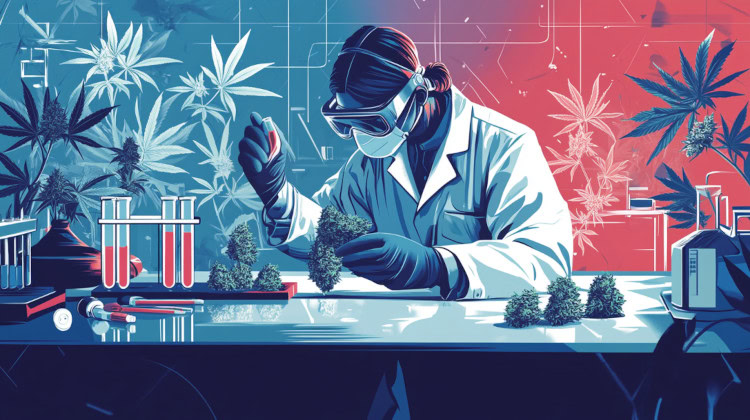
When cannabis users talk about THC, most refer to delta-9 THC, the most common intoxicating cannabinoid in cannabis. Other forms of THC exist, including delta-8-THC and delta-11-THC.
The difference between the common THC of delta-9 and the others is the location of the chemical bond on the carbon chain. To the cannabis user, the difference is potency.
Compared to common THC, delta-8-THC, is less potent and produces a milder high. Delta-8 is derived from hemp CBD. Although it doesn’t produce an intense high, it still may provide desirable effects for some patients.
Delta-11 THC occurs naturally in cannabis, but in tiny amounts. Commercial sales extract delta-11 THC from CBD. Reports on this new cannabinoid are primarily anecdotal, with potency claims ranging from mildly intoxicating to euphoric. It is presumed to have similar benefits to THC, but research is ongoing.
Other semi-synthetic cannabinoids, such as THC-O (THC-O-Acetate) and HHC (hexahydrocannabinol), are lab-modified compounds that can be more potent or have slightly different effects than natural THC. While these compounds are relatively new, they are becoming more common in the cannabis market.
Are Cannabinoids Safe?
Some research has linked cannabinoids to serious side effects, like depression, increased suicidal ideation, and increased risk of psychosis. Others show no increased risk or even a reduced risk. Until more research is done, it's impossible to say exactly how safe or unsafe cannabinoids are. It's worth noting that the risk of death from overdose with cannabis alone is almost nonexistent. However, cannabis can interact with other medications and even increase the chance of fatal overdose with those medications. As always, it's best to consult your doctor if you have any concerns about cannabis.
When trying a new strain or product, start with a small amount and give the product time to take effect. Remember that the effects of vaping or smoking begin much sooner than those of edibles. After an hour, the effects of a vape may dissipate, while the effects of an edible may intensify. Start low, go slow.
Some people may experience mild side effects after using cannabis like dry mouth, dizziness, or fatigue. THC can also cause temporary memory impairment or anxiety in high doses.1 However, cannabinoids like CBD and CBG have been studied for their calming and pain-relieving properties without intoxicating effects.4
Cannabis can cause potential drug interactions with up to half of the commonly prescribed medications. Interactions may occur with drugs prescribed for sleep, anxiety, depression, pain, seizure medications, and blood thinners. For example, CBD is known to interact with liver enzymes, like CYP3A4, which can dangerously raise the plasma concentration of these drugs.
Frequently Asked Questions (FAQ)
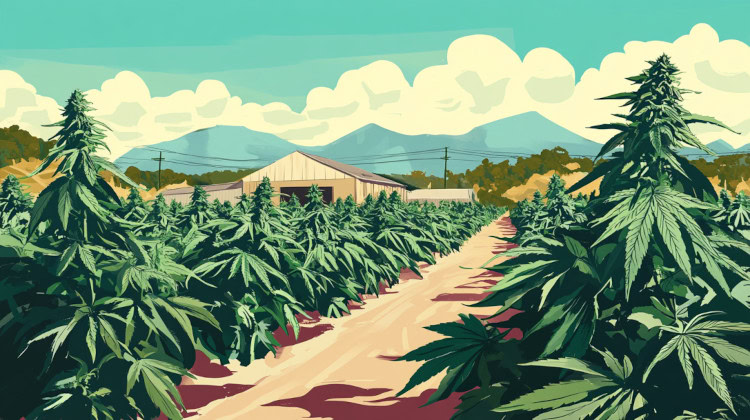
What are examples of cannabinoids?
Cannabinoids include both major and minor compounds found in cannabis. The most well-known examples are THC (tetrahydrocannabinol) and CBD (cannabidiol), but there are over 100 different cannabinoids, including CBG (cannabigerol), CBC (cannabichromene), CBN (cannabinol), and THCA (tetrahydrocannabinolic acid).3 Each cannabinoid has unique effects, some being psychoactive and others non-intoxicating.
What are the top 5 cannabinoids?
While the top cannabinoids vary based on their popularity and therapeutic potential, the most studied and commonly found cannabinoids in cannabis are:
- THC (tetrahydrocannabinol) – The main psychoactive component in cannabis.
- CBD (cannabidiol) – Known for its anti-inflammatory and calming effects.
- CBG (cannabigerol) – Often called the “mother cannabinoid” as it is the precursor to both THC and CBD.
- CBC (cannabichromene) – A non-intoxicating cannabinoid with potential antidepressant effects.
- CBN (cannabinol) – Found in aged cannabis, believed to have sedative properties.
Are cannabinoids safe to use?
For most people, cannabinoids do not produce serious negative effects. However, their effects depend on the type, dosage, and the individual's tolerance. THC can cause intoxication, impaired memory, and anxiety in some users, while CBD is non-intoxicating and noted for its calming effects. Minor cannabinoids like THCV and CBG are still being researched but appear to have minimal adverse effects. As with any substance, start with a low dose and consult a healthcare provider if you have underlying health conditions.1
What substances contain cannabinoids?
Cannabinoids are in cannabis plants, but they also exist in smaller amounts in other plants. Some non-cannabis sources of cannabinoids include black pepper, echinacea, cacao, and liverworts.2 While these plants do not contain THC or CBD, they have compounds that interact with the endocannabinoid system in similar ways.
- Lu HC, Mackie K. Review of the Endocannabinoid System. Biological Psychiatry: Cognitive Neuroscience and Neuroimaging. 2020;6(6). doi:https://doi.org/10.1016/j.bpsc.2020.07.016 ↩︎
- Gülck T, Lindberg Møller B. Phytocannabinoids: Origins and Biosynthesis. Trends in Plant Science. 2020;25(10):985-1004. doi:https://doi.org/10.1016/j.tplants.2020.05.005 ↩︎
- Sheikh NK, Dua A. Cannabinoids. PubMed. Published 2021. https://www.ncbi.nlm.nih.gov/books/NBK556062/ ↩︎
- Walsh KB, McKinney AE, Holmes AE. Minor Cannabinoids: Biosynthesis, Molecular Pharmacology and Potential Therapeutic Uses. Frontiers in Pharmacology. 2021;12. doi:https://doi.org/10.3389/fphar.2021.777804 ↩︎
- Tahir MN, Shahbazi F, Rondeau-Gagné S, Trant JF. The biosynthesis of the cannabinoids. Journal of Cannabis Research. 2021;3(1). doi:https://doi.org/10.1186/s42238-021-00062-4 ↩︎
The information in this article and any included images or charts are for educational purposes only. This information is neither a substitute for, nor does it replace, professional legal advice or medical advice, diagnosis, or treatment. If you have any concerns or questions about laws, regulations, or your health, you should always consult with an attorney, physician or other licensed professional.

